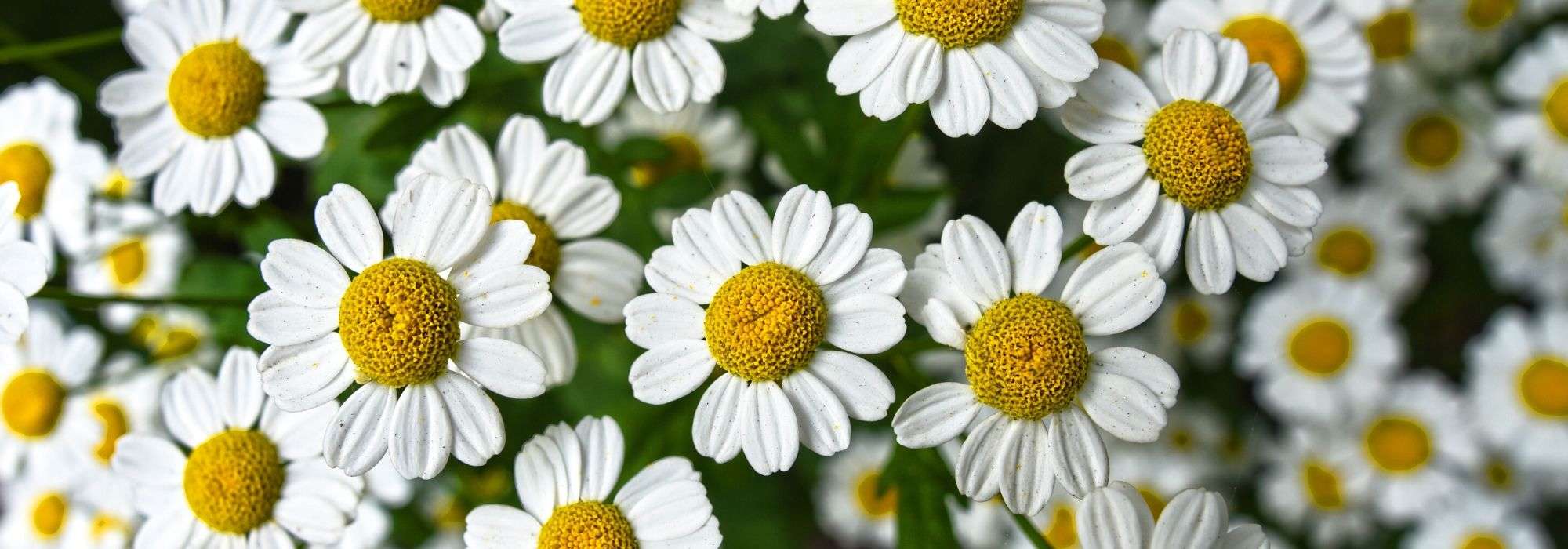
Chamomile: cultivation, harvest, benefits
Contents
Chamomile in a nutshell
- Chamomile is a plant grown for its ornamental, medicinal, and cosmetic qualities
- It is highly regarded in infusions and herbal teas
- Chamomile flowers have multiple benefits for digestion, sleep, and skin
- In summer, it displays lovely white heads with a yellow centre that are highly fragrant
- It is an easy plant to sow or plant in the vegetable garden as well as in aromatic plant gardens or rockeries
A word from our expert
The chamomile is a plant renowned for its ornamental, medicinal, and cosmetic qualities. It contains an essential oil that provides anti-inflammatory, anti-allergic, antispasmodic, and soothing properties for both irritated skin and eyes. The flower harvest takes place throughout the summer. When dried, they are used in herbal teas with relaxing and digestive benefits. A cup of chamomile is excellent for aiding digestion and promoting sleep.
Whether it is Roman chamomile (Chamomilla Officinalis), German chamomile, or matricaria chamomile, or known as Great chamomile, all are truly easy to grow and display lovely flowering in the form of small daisies. Not to mention the fragrance of their crushed leaves!
With its wild charm and simple appearance, this plant naturally finds its place in the vegetable garden, in medicinal herb gardens, in pots on a balcony, and even in summer borders.
How to use chamomile? What are its benefits? When and how to harvest its flowers? How to sow or plant it… here is everything you need to know about this aromatic plant with a rustic charm!
Description and Botany
Botanical data
- Latin name Chamæmelum nobile, Tanacetum parthenium
- Family Asteraceae
- Common name Chamomile
- Flowering May to October
- Height 0.10 to 1 m
- Exposure Sun
- Soil type rich and light
- Hardiness variable depending on species
The chamomile is an aromatic plant from the Asteraceae family, like daisies and chrysanthemums. It is native to Western and Southern Europe, North Africa, and Asia. In France, it grows spontaneously in many regions, in uncultivated land, on slopes, and sandy rocks, by ponds.
There are many perennial or annual species of chamomile. The most widespread is Roman chamomile (Chamaemelum nobile or Anthemis nobilis), also known as “noble chamomile” or “medicinal chamomile,” which is a perennial species. The German chamomile (Matricaria recutita or Matricaria chamomilla, also called “wild chamomile,” “small chamomile,” or “true chamomile,” is an annual species with very small heads, and the great chamomile or feverfew (Tanacetum parthenium), from which essential oil is extracted.
On a woody stump, it forms well-branched, bushy clumps, erect or creeping depending on the species, 10 to 1 m high and as wide. The Chamaemelum nobile ‘Treneague’ is a variety of Roman chamomile that stands out for its spreading habit and constitutes a low, evergreen groundcover not exceeding 5 to 10 cm in height. In contrast, the great chamomile can reach up to 1 m in height. Fast-growing, if it likes the spot you’ve chosen, it will often self-seed spontaneously from one year to the next.
Its foliage, deciduous or evergreen, is highly divided into 3 to 6 pairs of leaflets, themselves cut, attached to a long petiole, consisting of villous, alternate, bipinnatisect leaves. Ranging in colour from light green to grey-green, sometimes slightly golden and aromatic, they emit a scent reminiscent of apple when crushed.
The long summer to autumn flowering is the main asset of chamomile. From May to October, perched at the tips of the thin, hairy stems, solitary flower heads appear well above the mossy, finely cut foliage. The plant then becomes covered with numerous flowers in the shape of a simple daisy or dense pompom, grouped in corymbs. They emit a honey-like fragrance.
Depending on the cultivars, the flower heads are composed of a simple or double collar (‘Flore Pleno’) of white lanceolate ligules. They bend downwards at maturity but are all centred around a raised heart of yellow tubular florets held in grey-green involucres.
These melliferous and fragrant flower heads renew continuously, attracting the flight of pollinating insects. In summer, chamomile can be used to create very pretty wildflower bouquets.
These flowers transform into small achenes with ridges, lacking pappus.
Depending on the species, chamomile is cultivated differently in our gardens: German chamomile is an annual, while Roman chamomile and great chamomile are fully hardy perennials (at least down to -20°C, capable of adapting to all regions). Chamomile thrives in full sun in light, rather rich, slightly sandy, and well-drained soil. It is both a medicinal and ornamental plant. Chamomile naturally finds its place in a vegetable garden alongside its aromatic cousins, as it protects vegetables by attracting or repelling certain insects. It can be grown in open ground in a natural garden, in wildflower beds, or in pots on a balcony.
The chamomile is one of the most popular medicinal plants. Known for being the ally of blonde hair, chamomile is also reputed for its calming, stimulating, antispasmodic, and analgesic properties to prevent migraine attacks. Chamomile flowers are highly valued in herbal teas for their relaxing and digestive virtues.
Read also
Sowing of aromatic plantsMain species and varieties
On counts a large number of perennial or annual Chamomile species: Matricaria, Anthemis nobilis, Chamaemelum nobile, Tanacetum parthenium, Tripleurospermum inodorum…). They are commonly referred to as “Chamomile”. Among them, three possess remarkable medicinal properties and are part of the Western pharmacopoeia, and they are also the most widespread:
- Roman Chamomile, or Scented Chamomile (Chamaemelum nobile, formerly also known as Anthemis nobilis), which can be considered the queen of French chamomiles and is available in two well-known cultivars: ‘Flore pleno’, which is a double-flowered chamomile, and ‘Treneague’, which is a creeping and fragrant species.
- German Chamomile, Matricaria chamomilla (formerly Matricaria recutita), or Common Chamomile, Wild Chamomile, True Chamomile, German Chamomile, Bastard Chamomile, Small Chamomile, which is a small annual chamomile.
- Feverfew (Tanacetum parthenium).
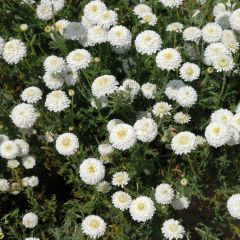
Chamaemelum nobile Ligulosum
- Flowering time August, September
- Height at maturity 20 cm
German Chamomile - Matricaria recutita
- Flowering time June to November
- Height at maturity 60 cm
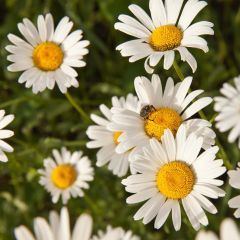
Anthemis nobilis
- Flowering time June to November
- Height at maturity 20 cm
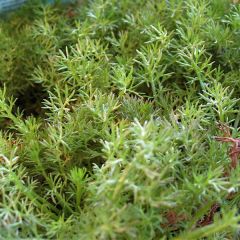
Chamaemelum nobile Treneague
- Height at maturity 7 cm
Discover other Chamomile
View all →Available in 1 sizes
Available in 1 sizes
Available in 1 sizes
Available in 2 sizes
Available in 2 sizes
Available in 1 sizes
Available in 1 sizes
Available in 1 sizes
Sowing and planting
Where to Sow and Plant Chamomile?
Chamomile is available as seeds to sow or as young plants in pots. Very easy to grow, generally hardy (at least down to -20°C in well-drained soil), chamomile thrives throughout France and adapts to all climates. It is also drought-resistant. Once well-rooted, perennial species (Roman Chamomile or Chamaemelum nobile and great chamomile) will flourish year after year, potentially self-seeding if the soil is suitable. The less hardy species, such as German Chamomile (Matricaria recutita), will be grown as annuals in open ground or in pots.
Chamomile is a Mediterranean plant that will develop quickly in full sun, where it will be more floriferous, sheltered from winds that may bend the stems of taller varieties. Chamomile is not demanding. It prefers light, humus-rich, well-drained, and slightly sandy soils. Avoid calcareous soils.
Chamomile naturally finds its place in the organic vegetable garden or in the herb garden, where it attracts aphids and notably two major garden and vegetable garden allies, the hoverfly and the lacewing, while repelling many harmful insects: its presence will thus spare neighbouring plants!
With its bushy silhouette, it will also easily fit into natural or wild gardens, adding relief and lightness to borders or cottage-style flower beds. The Chamaemelum nobile ‘Treneague’ is a creeping variety of Roman chamomile without flowers, which can be used as an alternative to lawn on small areas.
When and How to Sow Chamomile?
We offer chamomile seeds to sow directly in place or in trays from March to May, after the frosts for a harvest and flowering 2 to 3 months later.
In Open Ground
- Weed, refine the soil, and enrich it with well-decomposed compost,
- Sow directly in place by scattering without burying the very small chamomile seeds,
- Lightly cover the seeds with a thin layer of soil,
- Press down with the back of a rake,
- Keep moist during germination, which will take about 21 to 30 days,
- Thin out every 15 to 50 cm depending on the varieties, keeping only the strongest plants.
In Trays
You can also sow your chamomile seeds in a tray filled with potting soil or in pots from March under cover: keep the substrate moist and at around 15 to 20 °C during germination. Transplant the strongest seedlings into pots.
→ Successfully sow your culinary seeds with our video tips!
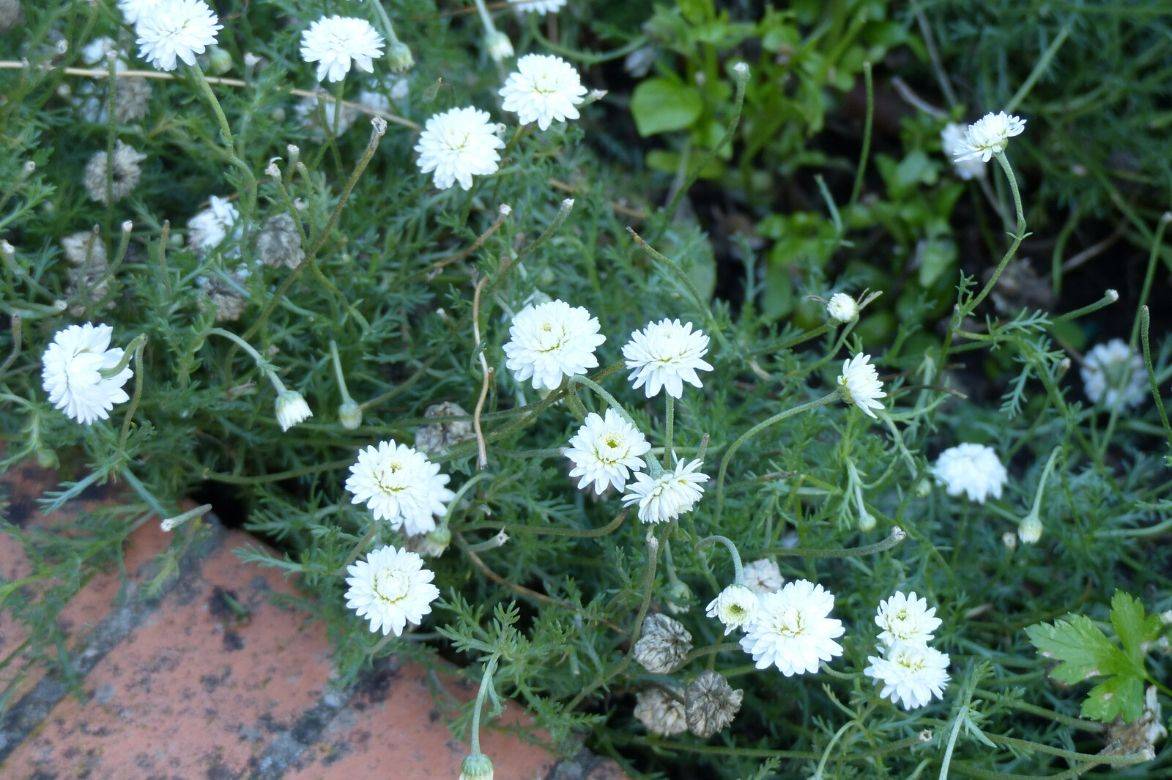
Chamaemelum nobile ‘Flore Pleno’ in border
When and how to plant Chamomile?
If you prefer to turn to our young plants of chamomile in pots, it’s just as simple! Plant them in spring in March-April after the frosts, or in September-October.
In open ground
Soak the root balls for about half an hour just before planting. Leave a space between the chamomile plants of 20 to 50 cm.
- Loosen the soil well,
- Dig a hole three times the volume of the root ball,
- Spread gravel at the bottom of the planting hole,
- Place the root ball,
- Backfill with garden soil mixed with sand and amended with well-decomposed compost,
- Firmly compact,
- Water generously after planting until established.
In pots
- At the bottom of a drainage hole container, spread a layer of gravel or clay balls,
- Plant the root ball in a mixture of potting soil and coarse sand,
- Water regularly as soon as the soil is dry; this ensures prolonged flowering.
Harvesting, Storing, and Using Chamomile
When and how to harvest?
Chamomile flowers are harvested in summer, generally from May to October, when they are fully open but just before complete blooming. Pick them preferably in the morning. Cut them just below the heads. Leaves can be harvested as needed throughout the growing season.
Storing chamomile
The aromatic properties of chamomile are optimal when the flowers are used fresh. However, if you wish to dry them: spread them out on a rack, sheet, or grid, in the shade, in a dry, airy place, and away from light.
Once dry, place them in a well-sealed paper bag or cardboard box.
How to use chamomile?
Dried or fresh chamomile flowers are widely used in herbalism. They can be used internally or externally in the form of infusions, ointments, lotions, or as compresses, poultices, gargles, and inhalations. Chamomile can also be used in the form of essential oil.
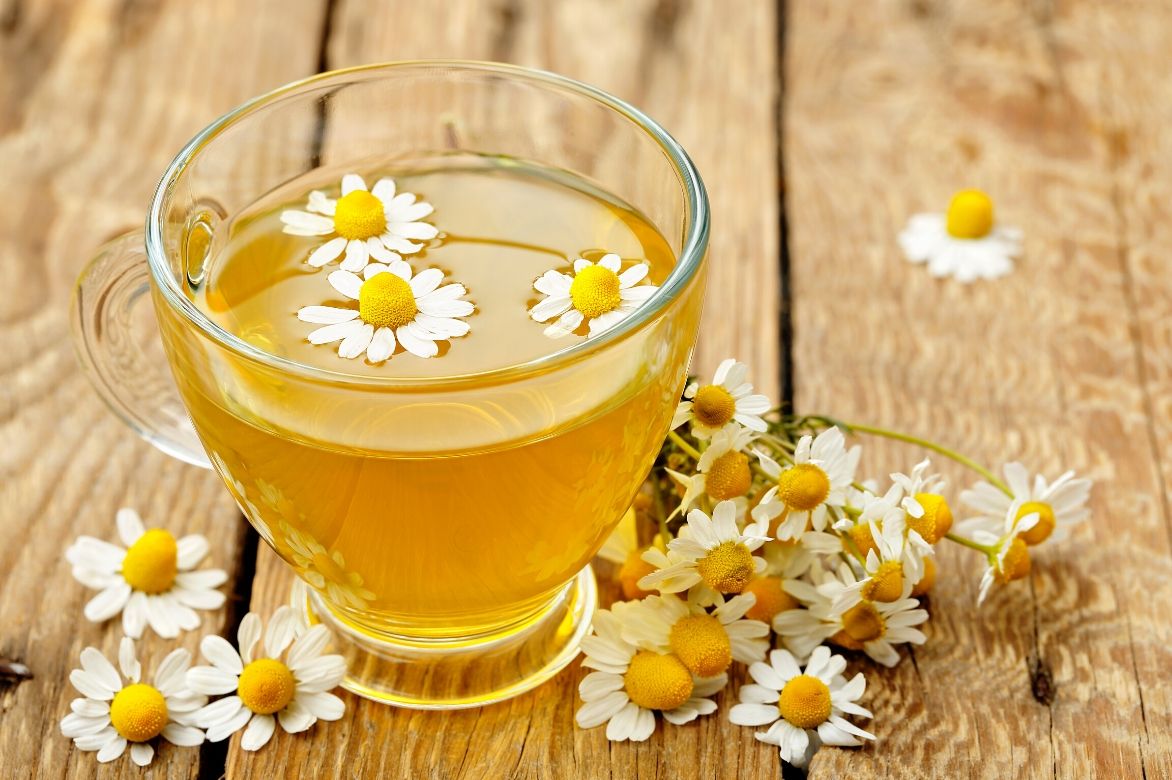
Chamomile Tea
Discover our tutorial: How to dry chamomile flowers?
Benefits and virtues of Chamomile
The Chamomile has been recognised since antiquity, where the Egyptians, Greeks, and Romans used it for its medicinal properties. Chamomile flowers possess anti-inflammatory, antiseptic, healing, and antispasmodic properties. Herbalists attribute the same properties to Roman chamomile as to German chamomile.
Traditionally, chamomile is often used to treat digestive disorders (a cup of chamomile after each meal!), to promote sleep, soothe menstrual pain, skin irritations, and sensitive eyes (a compress in cooled chamomile infusion).
Roman chamomile is primarily used in cosmetics. Chamomile cream has healing properties that are widely used to relieve dry skin or nappy rash in infants. In lotion or shampoo, Roman chamomile is traditionally used to “lighten hair,” as it helps achieve lovely blonde highlights.
Care and Maintenance of Chamomile
Once well established, Chamomile is a very low-maintenance plant. In open ground, water during the first year following planting. After that, it is not necessary to provide additional water; only water during hot spells in summer. In pots, more regular watering is required.
Carry out regular hoeing and weeding to prevent weeds from invading its base. In the coldest regions, mulch it to protect the base from frost. A rather fertile soil promotes its flourishing: in spring, add some compost by scratching it into the base of your plants.
Remove the flowering tops to encourage further flowering.
Allow it to seed to collect some seeds for your future sowing, or cut the flowers just after flowering to prevent it from self-seeding invasively.
After flowering, cut back the clump to 15 cm above the ground. Every 4 to 5 years, in spring or autumn, divide the stumps to rejuvenate the plants.
Chamomile has only one known enemy: aphids. To treat it, spray with water mixed with 5% black soap. Follow our tips for natural control against these pests.
The gardener’s little tip: chamomile attracts aphids and repels certain harmful insects. It will serve as protection for vegetable plants.
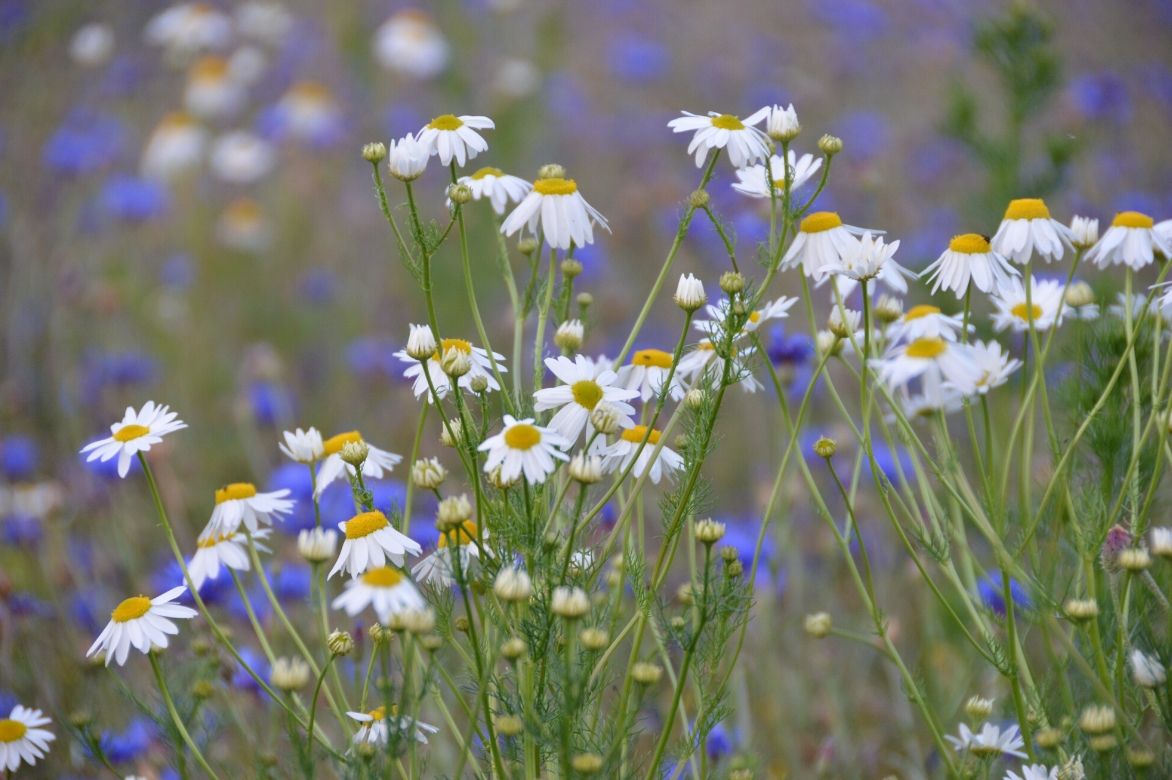
Multiplication
Chamomile plants, especially those of the single-flowered variety, self-seed very spontaneously and abundantly. If you already have a chamomile plant in your garden, collect a few seeds just before they reach full ripeness for sowing; otherwise, choose from our seeds.
Dividing Chamomile Clumps
Chamomile can also be easily multiplied by clump division in spring or autumn from mature clumps that are at least 4 years old. Division is recommended to rejuvenate old plants.
- Using a fork, carefully lift the clump to avoid damaging the roots.
- Divide a few sections from the periphery that contain leaves and roots.
- Replant immediately in the garden.
Cuttings
You can also take stem cuttings in spring.
- Take non-flowering herbaceous stem tips about 10 cm long.
- Remove the lower leaves.
- Insert the cuttings into pots filled with an equal mix of potting soil and sand.
- Place them in light and sheltered conditions.
- Transplant into the ground, spacing the young plants 20 to 30 cm apart, or pot them up.
Associate
With its somewhat wild appearance, Chamomile naturally finds its place in all natural and wild gardens, in the slightly blurred, rustic flowerbeds of a cottage garden. It will accompany airy flowering perennials such as Angelica, dill, and summer-flowering perennials with a light habit like Alchemilla.
With its generous and melliferous flowering, it attracts numerous pollinating insects and beneficial auxiliary insects like hoverflies and lacewings, and will settle in the heart of the vegetable garden, thus acting as a protector. Just like nasturtiums, it attracts aphids that will abandon your vegetables! However, it is not a good companion for lettuces. In the garden, plant it at the base of roses to create natural diversion.
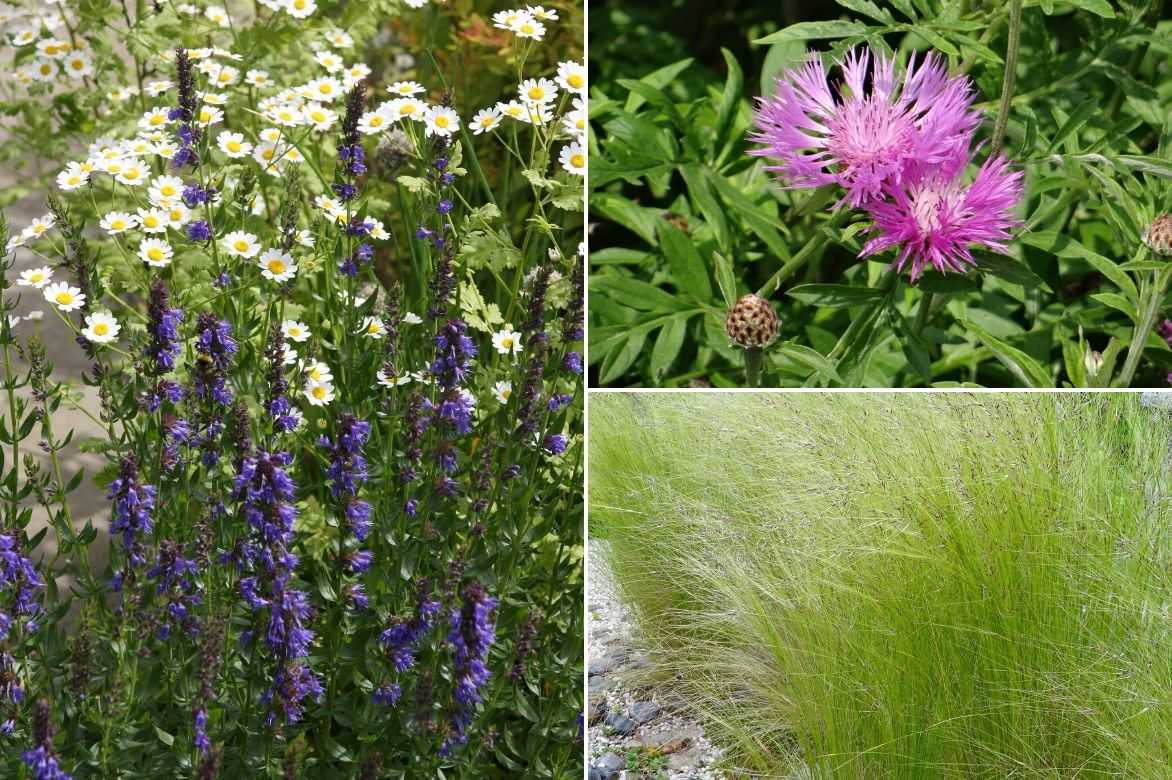
An example of a natural association: Great Chamomile (the golden version would work very well too) and Hyssop, Cornflower, and Angel Hair
It is a choice companion for all aromatic and edible perennial plants such as mints, common or medicinal fennel, lemon balm, nasturtium, borage, and crambe.
In a flowerbed or a wild mixed border, plant it alongside cornflowers, asters, astrantias, and yarrow… In the garden, use Roman chamomile, particularly the cultivar ‘Treneague’, as a small groundcover in rockeries or at the edge of perennial beds at the foot of lavenders, santolines, and thymes.
Get inspired with our guide “Aromatic Plants: 5 Great Ways to Integrate Them into the Garden”!
Useful resources
- How to recognise chamomile: our guide to avoid mistakes
- Eating flowers has become a real culinary trend! What are the best edible flowers?
- Enjoy the benefits of chamomile, a recognised medicinal plant
- All our tips for effectively and naturally combating aphids
- Discover the most beautiful collection of vegetable and aromatic seeds!
- It’s easy to succeed with the sowing of aromatic plants by following our advice!
- Check out our tutorials:
- How to make chamomile infusion and maceration to boost your crops? All our tips!
- Subscribe!
- Contents
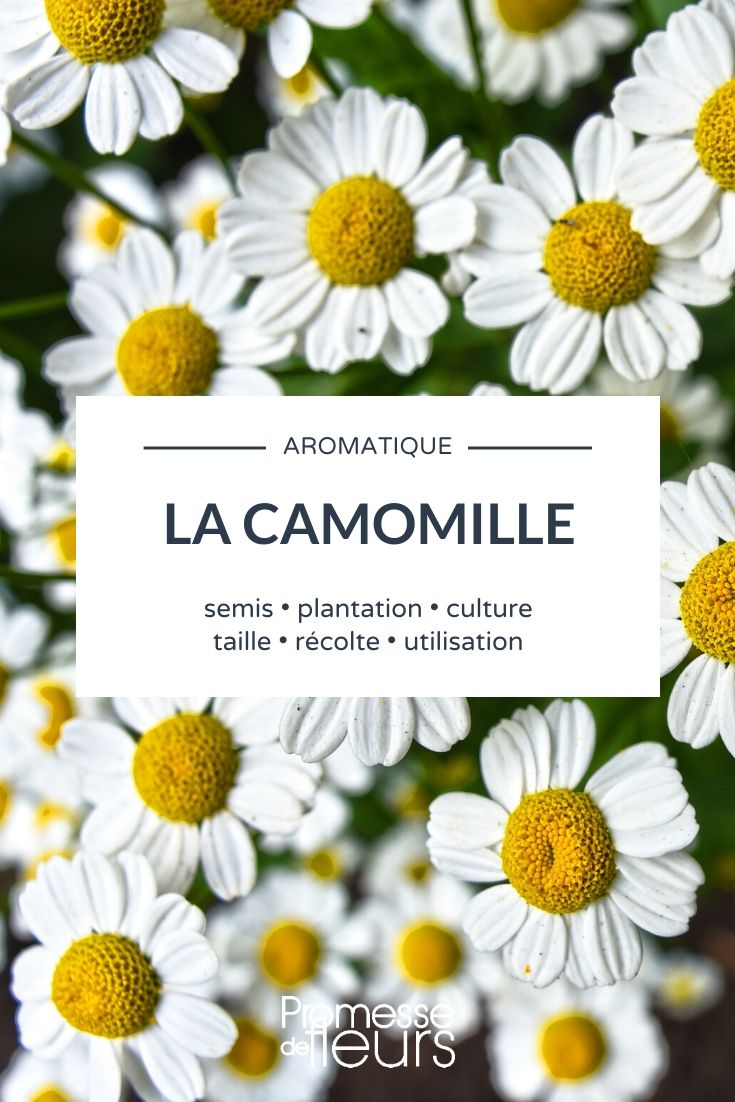































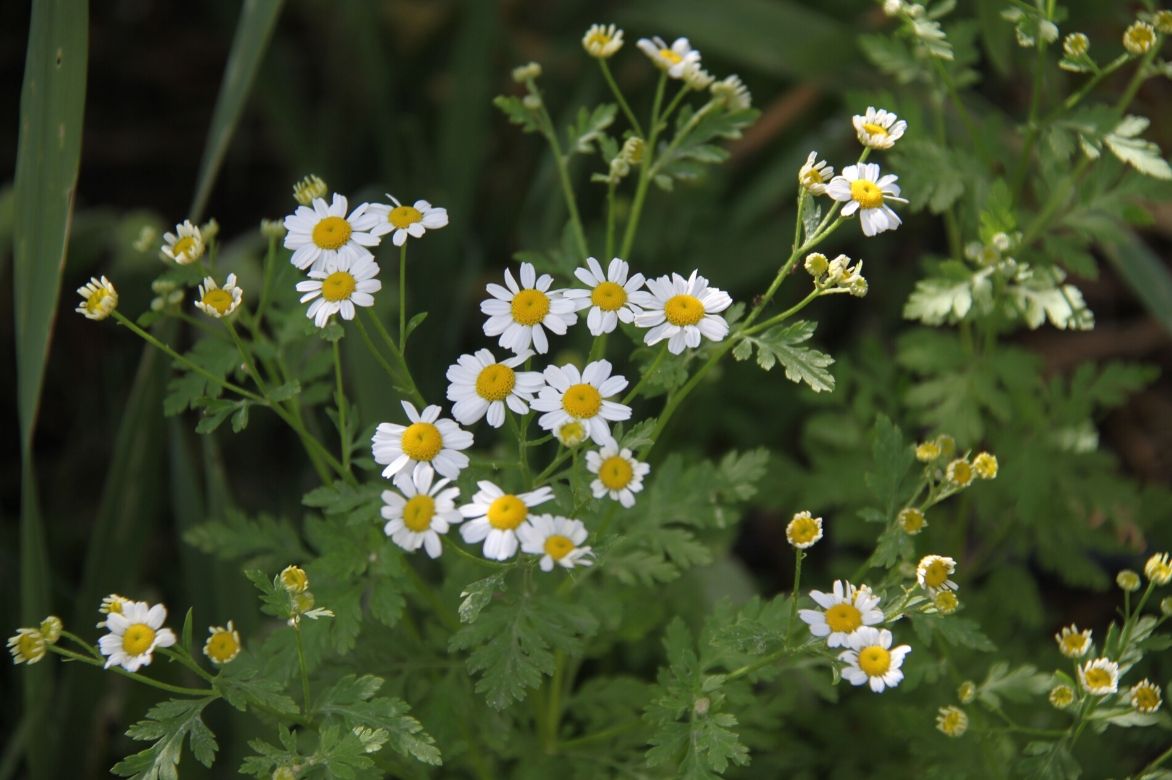
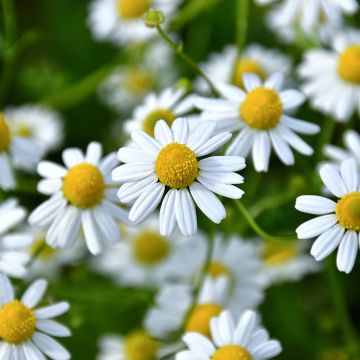




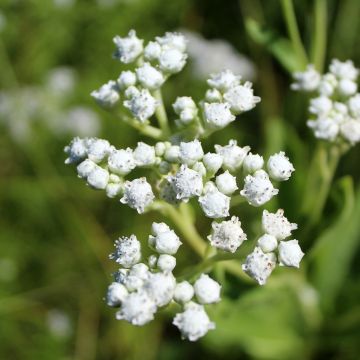
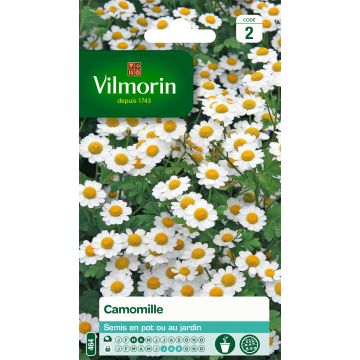

Comments